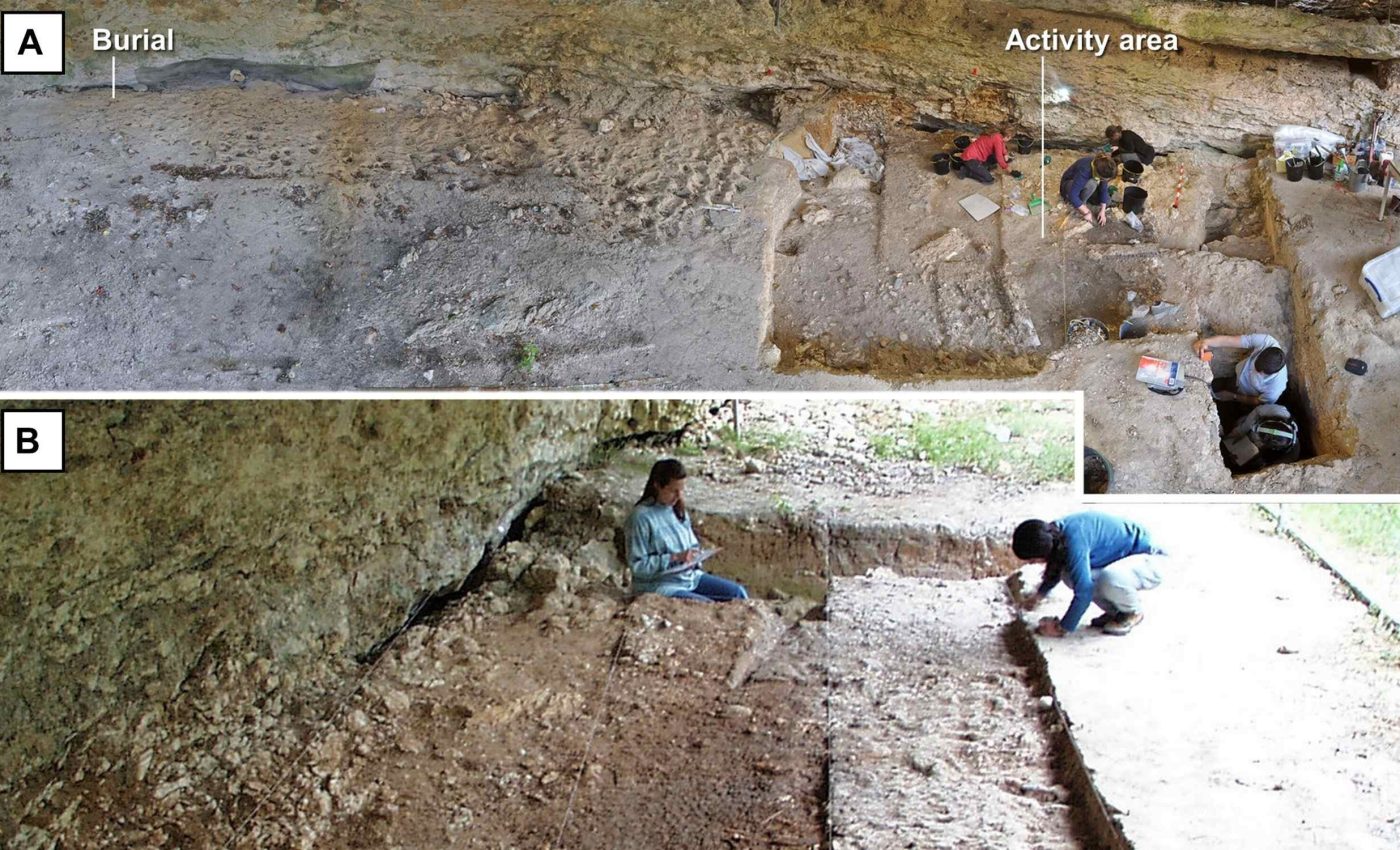
A 28,000-year-old 'hybrid child' confirms interbreeding between humans and Neanderthals
They found this child’s bones 27 years ago in a shallow rock shelter in central Portugal. Researchers immediately noticed that the young skeleton had traits belonging to modern humans and to Neanderthals, suggesting these two groups once had children together.
Recent testing shows the remains are around 28,000 years old, which supports the idea that these populations did more than simply coexist. Genetic studies already confirm that many people today carry some Neanderthal DNA.
“Being able to successfully date the child felt like giving them back a tiny piece of their story, which is a huge privilege,” said Bethan Linscott from the University of Miami, who helped lead the effort to pinpoint the child’s age.
Piecing together an ancient grave
Archaeologists mentioned that the bones were colored with red pigment. That detail suggests the child, likely only around four years old, might have been wrapped for a special burial.
The skeleton’s body proportions indicate mixed heritage. Experts say these features align with evidence that humans and Neanderthals shared genetic material, which still appears in modern populations.
Humans and Neanderthals confirmation
For years, scientists struggled to determine the age of the child’s bones. Contamination from roots and soil made traditional radiocarbon dating unreliable.
With updated methods, they’ve now shown that the child lived around 28,000 years ago – right in the window when humans and Neanderthals were both present in Europe.
This reaffirms that the child came from a population where the two groups had already blended.
Scientists relied on a method that focuses on analysis of hydroxyproline, an amino acid that helps form bone collagen. By isolating this portion of proteins, they overcame contamination that had previously prevented accurate dating.
Earlier tests failed because of plant material and residue that altered the results. This amino acid-based approach yielded a more trustworthy age estimate that suggested the burial predated modern times by many thousands of years.
Tracing the child’s physical features
Researchers have noted that the child’s skeleton displayed a mix of traits. The limb proportions were similar to those seen in Neanderthals, while the skull and jaw had features reminiscent of modern humans.
This combination supports the idea of ancient interbreeding. It also suggests that early hybrid individuals were not rare accidents but part of a broader pattern of human evolution in Ice Age Europe.
“The study of where humans came from is important for the same reason we keep the portraits of our parents and grandparents,” said João Zilhão from the University of Lisbon. Anthropologists stress that such discoveries highlight how interwoven human origins can be.
This child’s grave shows that multiple human groups carried on shared traditions. It reminds us that cultural practices, like careful burials, may have spanned diverse communities.
How burial practices reveal social ties
The child’s grave wasn’t a simple resting place – it reflected cultural meaning. The red ochre staining on the bones and the possible use of animal skin indicate symbolic rituals that may have been shared across communities.
Nearby findings, including a carefully placed juvenile rabbit bone and traces of charcoal under the body, suggest intentional acts tied to mourning or belief. These choices give clues about how early humans related to one another, honored their dead, and marked moments of loss.
The mystery of the red deer bones
Two red deer bones found near the child’s body were once thought to be part of a funeral ritual – maybe offerings or tools used during burial. But new hydroxyproline dating shows that those bones are older than the child, ruling out that theory.
It’s now more likely the deer bones were already in the ground when the grave was dug. They may have just been moved accidentally during burial or used to help position the body, not placed there for symbolic reasons.
Humans and Neanderthals – what’s next?
Charcoal found beneath the child’s legs was once believed to mark a ritual fire set during the burial. But the charcoal turned out to be at least 150 years older than the child, which weakens the idea that it was intentionally burned for the ceremony.
Instead, researchers think it was already part of the shelter floor, possibly left from older human activity in the area. While it added mystery to the burial, the charcoal may have had nothing to do with the child’s burial at all.
Researchers plan to apply similar dating methods to other remains that once seemed impossible to date. The hope is that these techniques will uncover more about where our ancestors traveled and how they mingled with different populations.
Bringing these findings to the public presents a broader lesson about our shared past. The long-buried skeleton serves as a symbol of how varied groups once connected to shape who we are today.
The study is published in Science Advances.
—–
Like what you read? Subscribe to our newsletter for engaging articles, exclusive content, and the latest updates.
Check us out on EarthSnap, a free app brought to you by Eric Ralls and Earth.com.
—–













